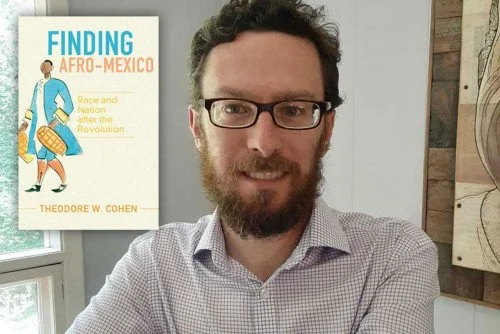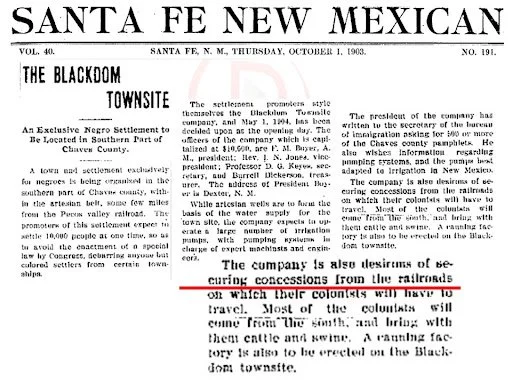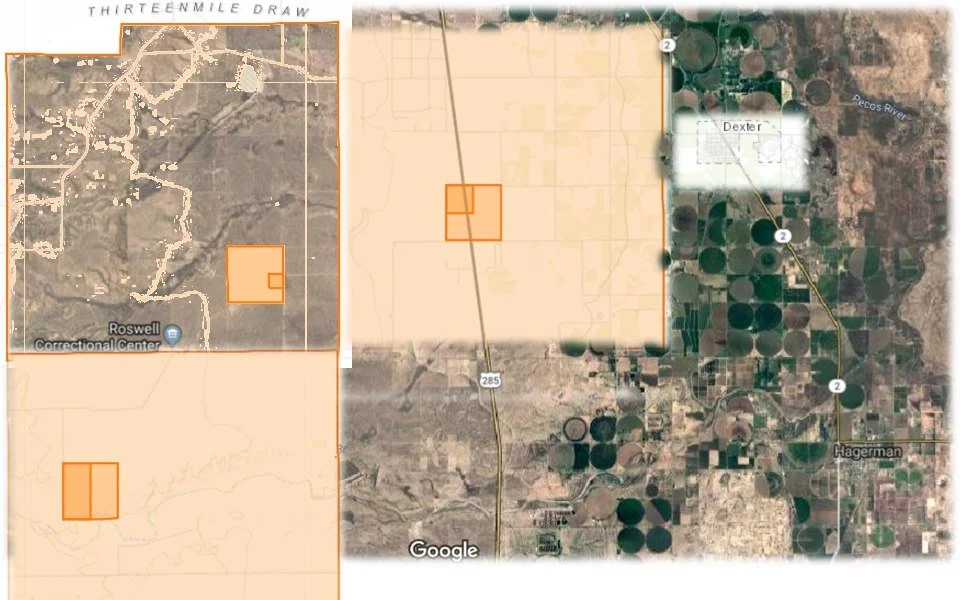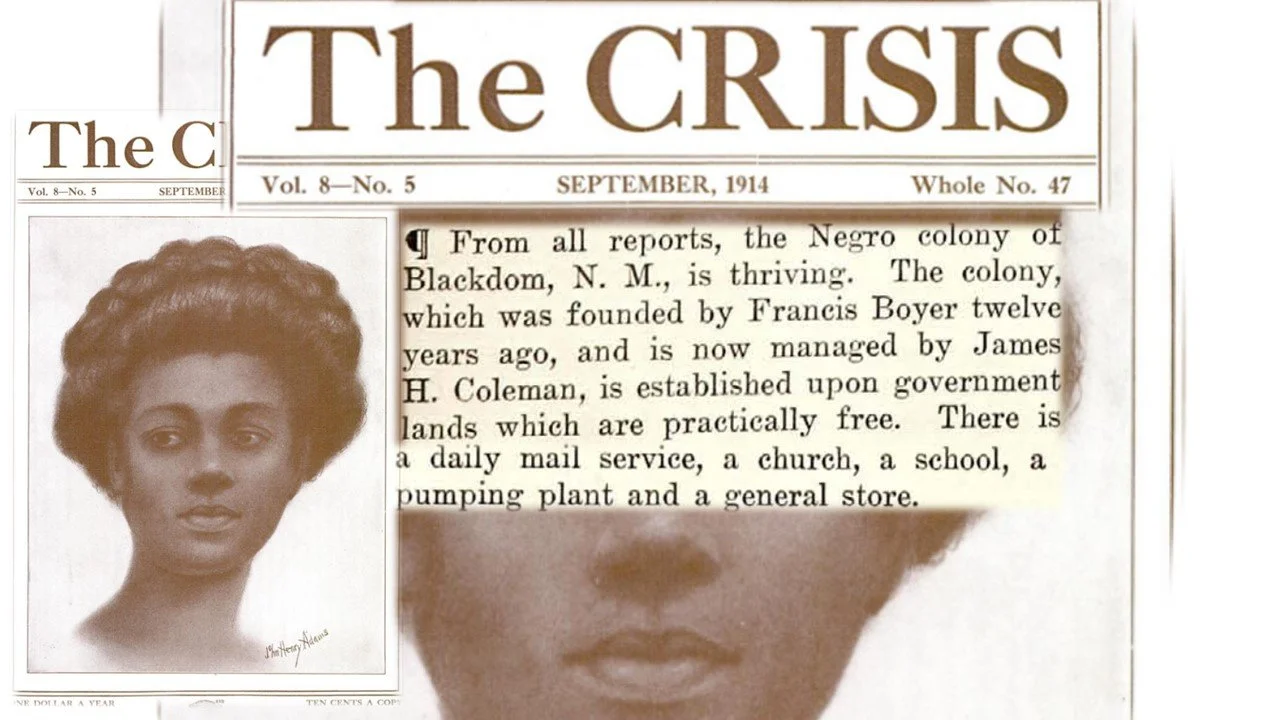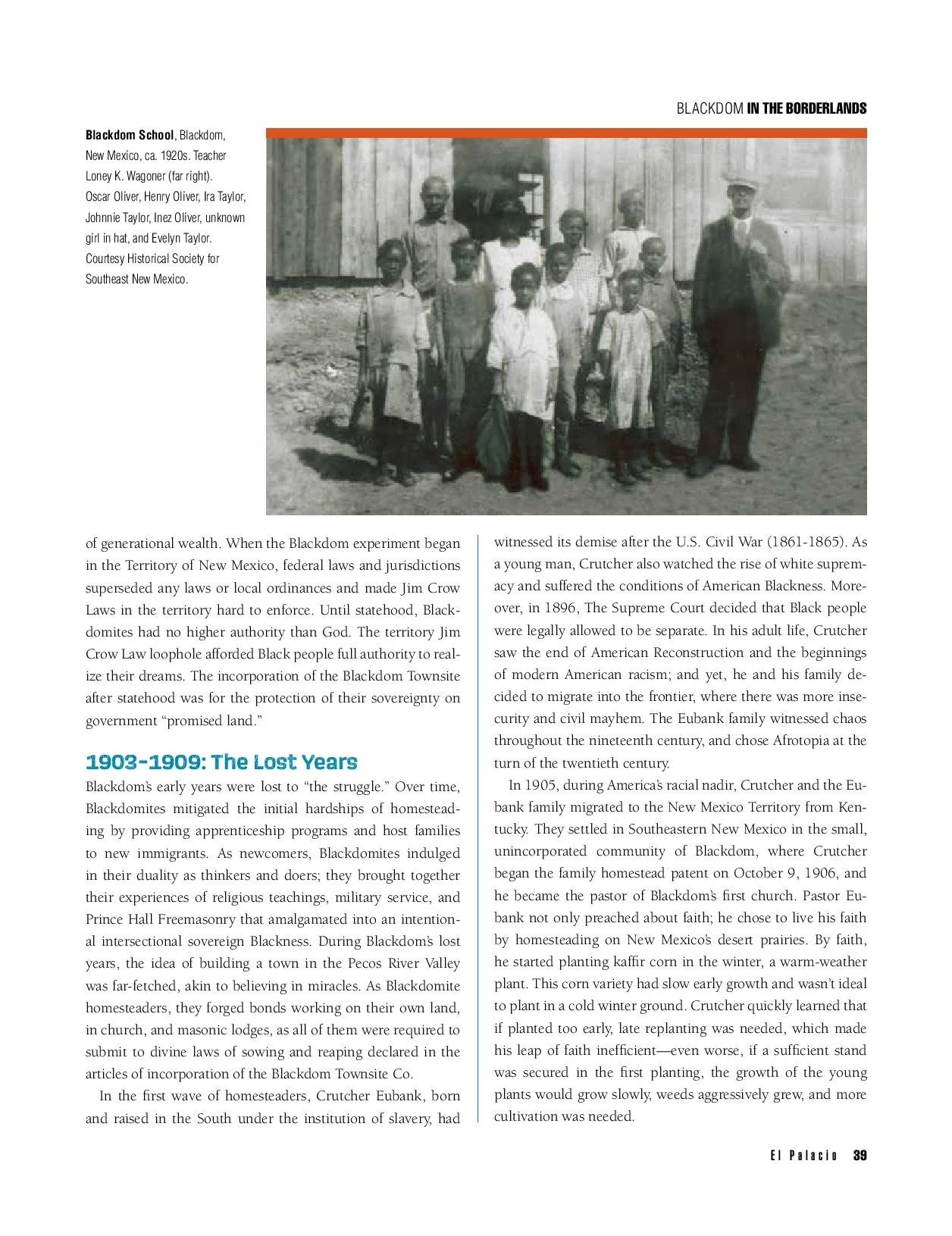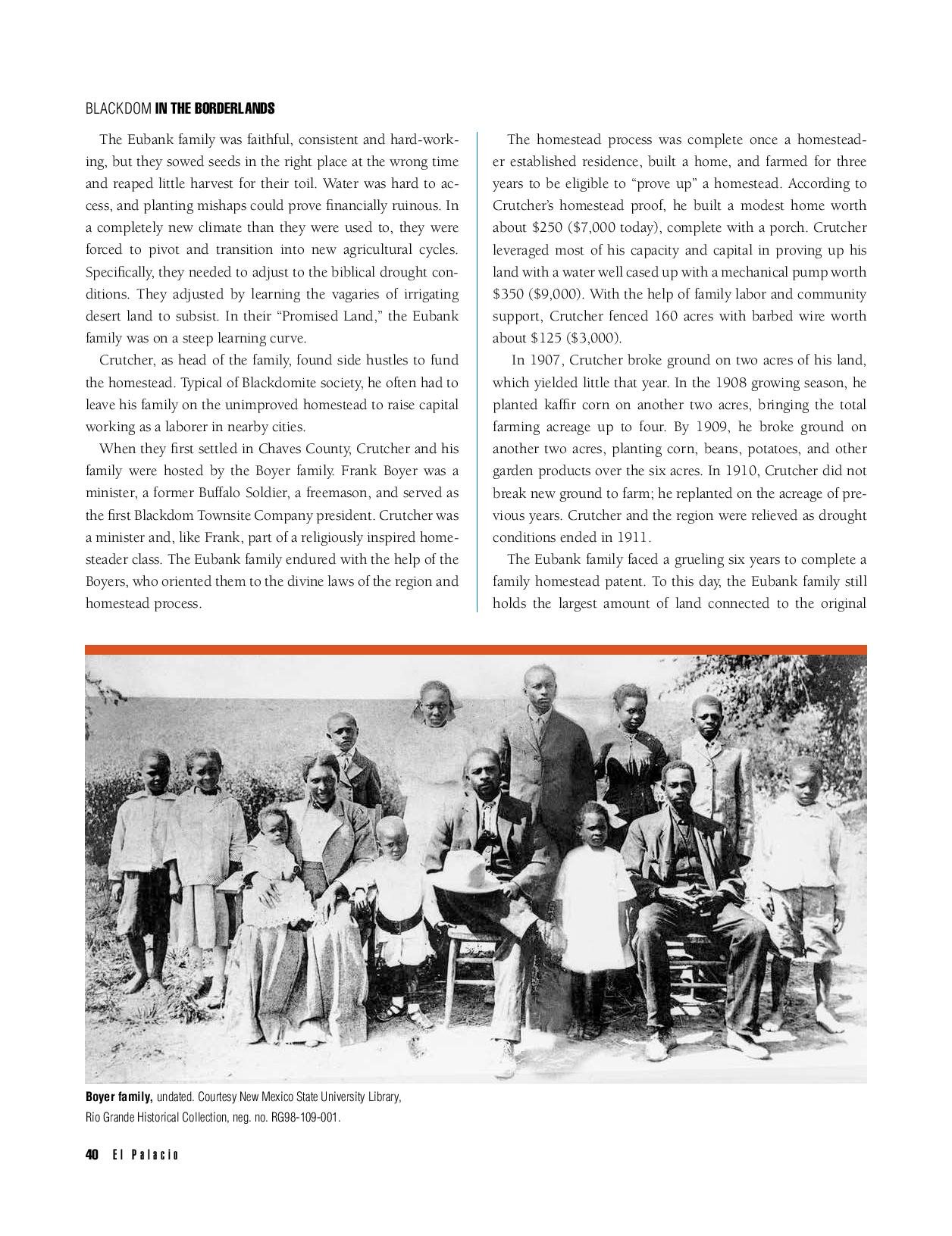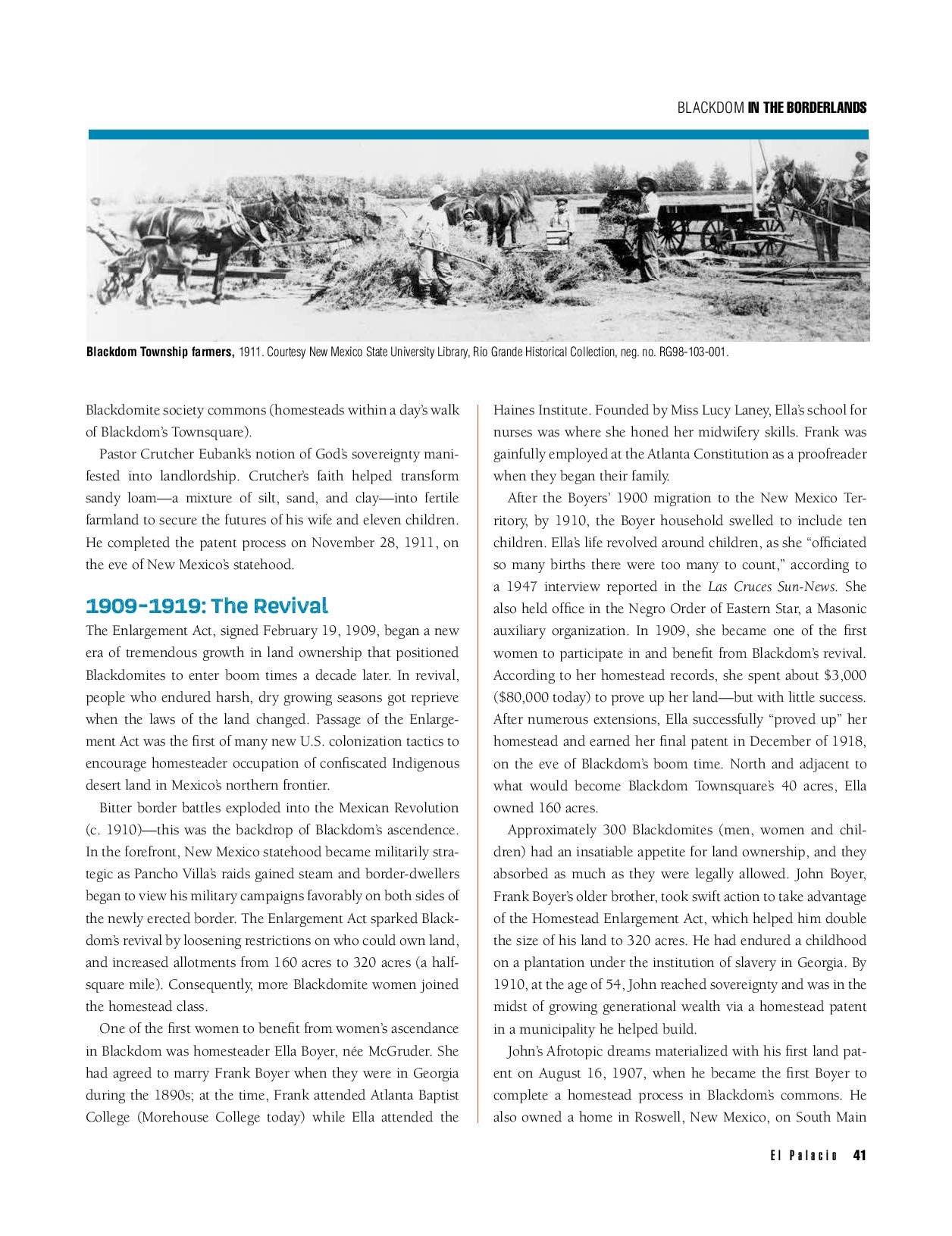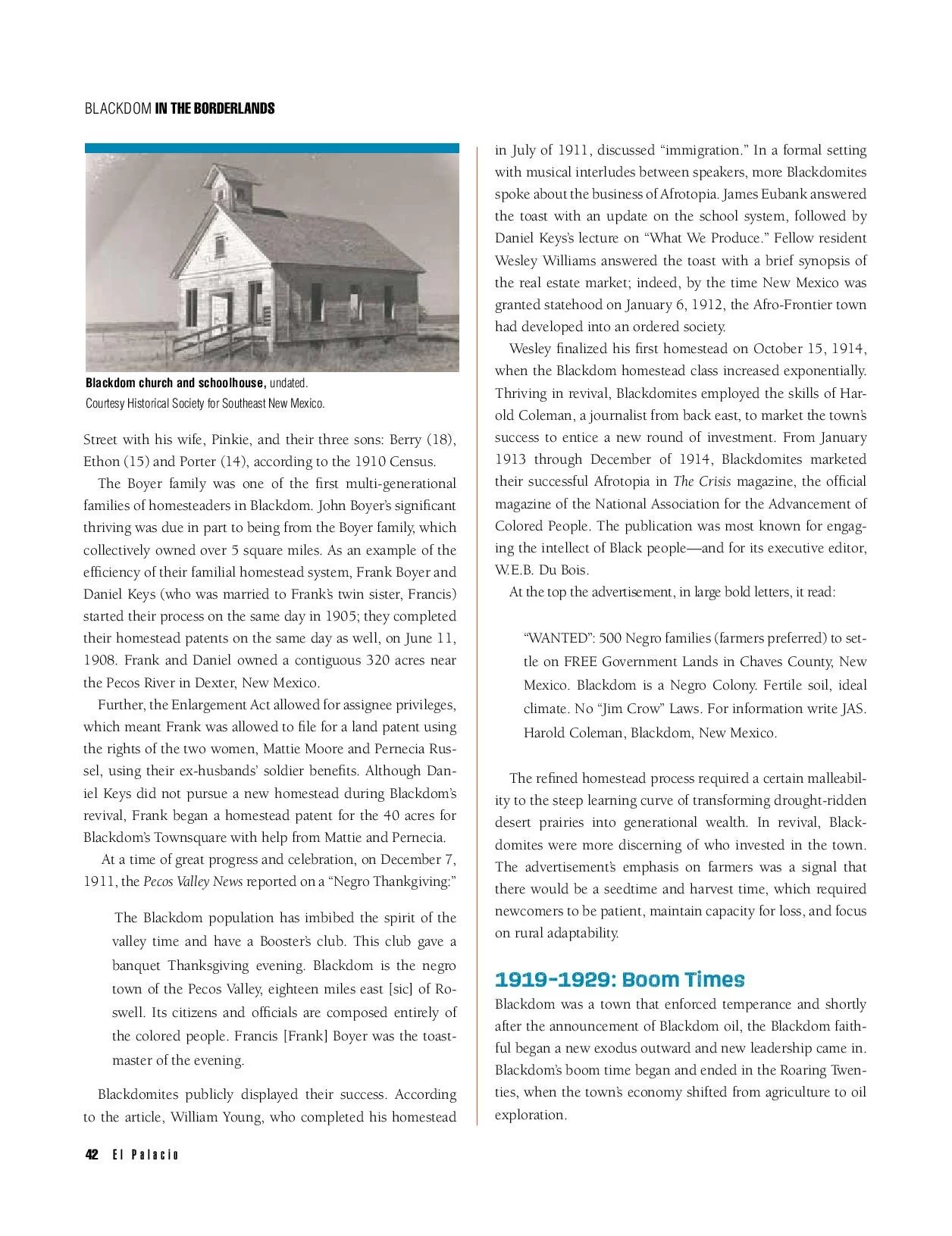Intersectional Blackness at Mexico’s Northern Frontier
Preface
Theodore W. Cohen’s Finding Afro-Mexico: Race and Nation after the Revolution illuminated the historical backdrop of Blackdom’s History. Blackdom, New Mexico (1903-1930) was not a subject of Cohen’s study; however, his scope provided a catalyst to refine the Afro-Frontier Thesis, and was the impetus to write a review. Finding Afro-Mexico served the purposes of refinement as well as the reintroduction of The Significance of the Afro-Frontier in American History to those unaware of the study. Cohen explored the “Afro” theme in his historical narrative and provided evidence of a collective intersectional “Black” consciousness in the Borderlands.
Intentionally, in this review, “Afro” and “Black” have many meanings. Race doesn’t exist in the natural world. The process of becoming, or participation in racialization processes encouraged development of subaltern spaces. In this review, “Blackness” began in the late 1400s. Africanity, or “Afro” was forged out of a complicated mixture of African descendants participating in a diversity of place-based colonization projects. Notions of an objective well defined “Blackness” evaporate in frontier spaces of the Borderlands. Instead, definitions of “Afro,” “Black,” and “Blackness” are a subjective collection of tangible and intangible elements associated with “African” descendancy and notions of “citizenship.” Oversimplifications related to identity in this review are for the sake of brevity, and to highlight intersections of discussion rather than affirmation or projection of a realized static identity.
Together, the evidence in Finding Afro-Mexico and the Afro-Frontier Thesis support an enriched acknowledgement of “Black” consciousness in the Borderlands. The formal engagement of the Afro-Frontier Thesis was intentionally subjective. Cognizant of “White” conscious spaces; no matter, academic, entertainment or religious, Grand Narratives in Black Diasporic Histories are ignored. This review agitated a “cross-border” dialogue that assumed “Black” people employed new, and often, non-linear ideas that congealed into manifested Afro-Frontier spaces as well as Afrotopia.
Mexico’s Northern Frontier
Indigenous spaces were forged into frontiers and fortified into colonized places through political and cultural projects. As early as 1519, European as well as African colonizers brought death and perpetual tumult into Indigenous spaces as part of a forced transformation of land into “the Americas.” By the 1800s, Indigenous Peoples in “North America” hosted two major colonizer forces. At the forefront of both colonization efforts, African descendants were significant to the military advance, occupation, and transmogrification of “territories” into “states.”
In 1848, the two warring colonization projects resolved disputes and morphed into neighboring countries; Mexico to the South and the United States to the North. Although the U.S.-Mexico War ended with redrawn boundaries, borders crossed people who had their own consciousness. In a 1619 Project, Europeans who expanded westward marketed their campaign as a Manifest Destiny to colonize Indigenous Lands from ocean to ocean. Instances of colonization persisted with excessive militarization, medicalization, and racialization.
Enforcement of racial and caste systems fueled growth in the subaltern and amongst the “Black” conscious resistance. In Mexico’s Northern Frontier, Black folks on both sides of the U.S.-Mexico border maintained a consistent response identifiable throughout the African Diaspora. Newly annexed Indigenous spaces changed in relation to the colonizer’s consciousness of what to do with the new territories, and exploitation of Indigenous and Native Peoples. The response included radical revolt and revolution. Although there was violence that beget more violence, resistance beget more resistance.
Finding Afro-Mexico evokes 1810 and the history of Father Miguel Hidalgo y Costilla, and Mexican independence from Spain. Within a few pages, Cohen established a continuity and cohesion between events of a Black Past and the new era of Afro-Mexicanity. Cohen also articulated Mexican “Blackness” as a product of resistance. In the U.S.-Mexico Borderland, citizenship and language further complicated racialization processes and nurtured a unique space; Mexico’s Northern Frontier, where boundaries of community overlapped national and local “legal” boundaries. Within perpetual cycles of coercion and consent in the racialization process, “Blackness” functioned as an anti-thesis.
Situationally, the Exoduster narrative trajectory evaporated as a useful tool to explain a history of Black non-Hispanic people who achieved Afrotopia (Blackdom), established an oil company in 1919, and Black folk’s named their business Blackdom Oil Company. Black “non-Hispanic” people who migrated to the U.S.-Mexico Border region adjusted to the complicated frontier spaces, places and opportunities. In popular histories Blackdomites failed and abandoned the colonization project in “the mid-1920s.” However, the evidence in the Afro-Frontier Thesis proved land ownership to this present day, and that Blackdomites received royalties from Blackdom Oil Company as late as the post-World War II era.
Transnationalism
The Afro-Indigenous Mexican Seminoles are a good example of how national borders remade Indigenous places, spaces, and communities. Pushed from “Florida,” survivors settled in Mexico’s Northern Frontier amongst other places. After the U.S.-Mexico War (1846 -1848) and turn of the 20th Century immigration policies, the border separated Afro-Indigenous Seminoles who now speak separate languages (English and Spanish) among their own dialects. The lack of cohesion supported popular notions of their inferiority. Instead, colonized people in the borderland became border-dwellers.
Borderland Studies provided more capacity to articulate a complicated history of Afro-Indigenous people who developed into Border-Dwellers. The Afro-Frontier Thesis added more capacity for the reader to see Blackdom’s abundance of wealth when popular narratives projected failure and fecklessness. Sifting Blackdom, New Mexico’s primary source material through the rigors of Borderland History methods helped adjust Blackdom’s narrative to reconcile its apparent anomalousness. Exoduster was a pervasive term that characterized Black migration during the late Nineteenth Century and early Twentieth Century. A framework developed by culture producers who colored a “Black” experience through a lens of Up From Slavery and fear of “White” people.
The “exodus” sketched Black migration as an escape from the horrors of racist subjugation and violence indicative of “Southern” politics/culture biblical narratives. Emphasizing the history of White violence, often stories of All-Black Towns describe utopia threatened by White people. Juxtaposed to fear of Whites, the Black spaces were mythologized as a promised land–ordained by God and predetermined for the migrating refugees. These often scholarly narratives reinforced popular notions of Black inferiority, a lack of self-determination, and helplessness.
Colon A. Palmer’s 1976, Slaves of a the White God was a seminal work on Blacks in Mexico. In 1519, Black colonization efforts were in a northward expansion. Notions of a 1619 [Colonization] Project undergird the Turnarian Westward expansion narrative in “American” History, “The West,” and the US-centric language of an “American Southwest.” In a Borderland Narrative, the Afro-Frontier Thesis began as an open critique of the Turnerian West and ended as a critique of Borderland Studies for the lack of Black (non-creolized) narratives. Slaves of a White God anchored the literary review and shifted the narrative of Black People from a westward dominated project of colonizer exspansion to more of a dual or “transnational” colonization model of “Blackness.”
In the 19th Century, the spread of “White” consciousness infected Mexico’s Northern Frontier. The newly created Borderland in Mexico’s Northern Frontier added a citizenship component that was exploited, when possible, by newly created Border-Dwellers who found ways to personally benefit from chaos and darkness. For example, Karl Jacoby’s The Strange Career of William Ellis: The Texas Slave who became a Mexican Millionaire identified the new space of opportunity for Black folks. The “strange careers” of “Black” people hatched out of the chaos and discombobulation of racialization processes.
Translations
Theodore Cohen argued, “December 8, 2015, inaugurated a new period in Afro-Mexican history.” I pictured my doctoral hooding ceremony on December 9, 2015. I graduated the next day with my Ph.D. in Borderlands History with an emphasis in African Diasporic Studies and U.S. History from the University of Texas at El Paso. I was a first generation college student. I was the first and only Black (non-Hispanic) person to graduate from the program focused on Borderland History and Black (non-Hispanic) people. After graduation, leaving the UTEP campus, in my graduation gown holding my mock diploma and cap, from the parking lot on the U.S. side, I could see into Ciudad Juárez, Mexico. Similarly, Cohen’s work allowed me to better see into “Black” Mexico.
Intersectionally, during the 1800s, in Finding Afro-Mexico, and in The Afro-Frontier Thesis, African descendants in diaspora communicated beyond borders to one another in alternative spaces. Fluency in the language beyond borders added capacity to bolster antitheses in “White” dominated border regions. Nurturing “Liberation Theology” in Mosques, Synagogues, and Churches (among other spiritual practices), “Black” as an existence was a form of resistance. Embracing “Blackness” offered ways to thrive amidst the chaos of racialization.
The Significance of the Afro-Frontier in American History challenged the field of Borderland Studies to better include non-creolized Black folks in new historical narratives. The Afro-Frontier framework identified key elements to find significance in Black bodies that occupied frontier spaces.
Anchoring the two separate studies was a relationship between post-Revolutionary places and “Black” conscious spaces. Theodore Cohen’s thorough deployment of Du Bois, Hughes, and Ellison was hard not to notice. Masterfully, Cohen constructed intersectional Black spaces as he weaved through the scholarship and cultural production that influenced “Blackness” in Mexico. The two works meet as Blackdomites to intersect with Cohen’s survey of Black intellectual history. As an Afro-Frontier town, Blackdomites nurtured intellectual pursuits. While W. E. B. Du Bois was editor, Blackdomites advertised themselves in The Crisis Magazine and for decades had stories written describing Afrotopia.
Why transnational? Blackness congealed into new forms and depended on situations and circumstances. Yet, “Blackness” maintained an integrity to fundamental elements that consisted beyond borders of languages, nationhood and citizenship. Universally, in counter-hegemonic models, “Black” people revolted against subjugation and sought sovereignty by any means they deemed necessary.
While exploring Theodore Cohen’s work never was “Black” or “Blackness” narrowly defined. For example; Cohen explored Zapata’s “Blackness” emphasizing Andres Molina Enriquez’s belief that he was of African descent. According to Cohen, “In thinking about the racialization of place, people, and culture, I never conclude that something is or isn't Black. Of course this has its own problems, but I hope I make the case in the Intro and Conclusion on why I take this methodology. My goal is to explain--and make an argument about--how Mexicans and others (especially African Americans) classify people, places, and cultures as Black, Afro-descended, etc.” Cohen’s mindful treatment of Black conscious space provided a whole view of African diasporic pieces.

